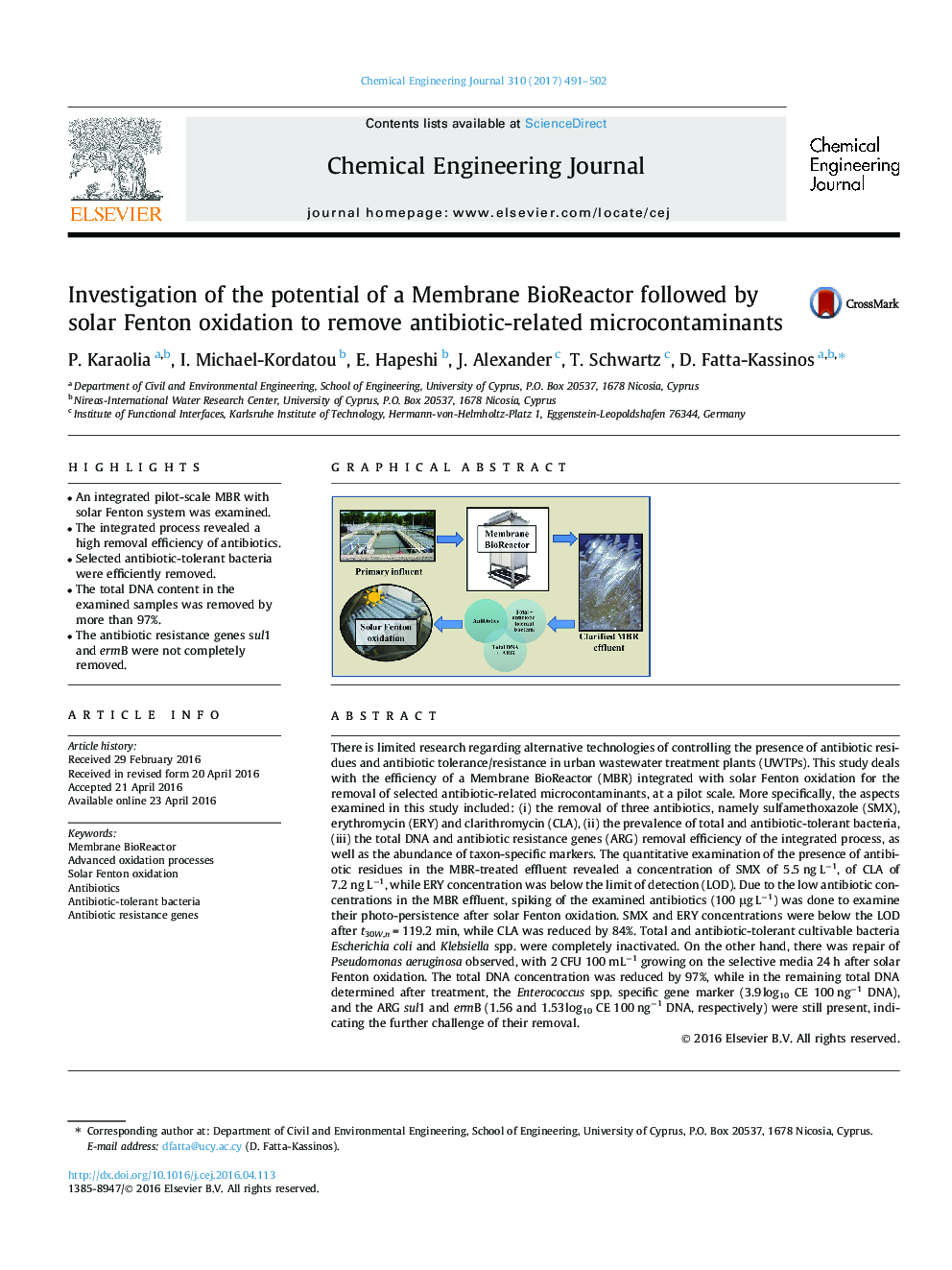| Article ID | Journal | Published Year | Pages | File Type |
|---|---|---|---|---|
| 6466760 | Chemical Engineering Journal | 2017 | 12 Pages |
â¢An integrated pilot-scale MBR with solar Fenton system was examined.â¢The integrated process revealed a high removal efficiency of antibiotics.â¢Selected antibiotic-tolerant bacteria were efficiently removed.â¢The total DNA content in the examined samples was removed by more than 97%.â¢The antibiotic resistance genes sul1 and ermB were not completely removed.
There is limited research regarding alternative technologies of controlling the presence of antibiotic residues and antibiotic tolerance/resistance in urban wastewater treatment plants (UWTPs). This study deals with the efficiency of a Membrane BioReactor (MBR) integrated with solar Fenton oxidation for the removal of selected antibiotic-related microcontaminants, at a pilot scale. More specifically, the aspects examined in this study included: (i) the removal of three antibiotics, namely sulfamethoxazole (SMX), erythromycin (ERY) and clarithromycin (CLA), (ii) the prevalence of total and antibiotic-tolerant bacteria, (iii) the total DNA and antibiotic resistance genes (ARG) removal efficiency of the integrated process, as well as the abundance of taxon-specific markers. The quantitative examination of the presence of antibiotic residues in the MBR-treated effluent revealed a concentration of SMX of 5.5 ng Lâ1, of CLA of 7.2 ng Lâ1, while ERY concentration was below the limit of detection (LOD). Due to the low antibiotic concentrations in the MBR effluent, spiking of the examined antibiotics (100 μg Lâ1) was done to examine their photo-persistence after solar Fenton oxidation. SMX and ERY concentrations were below the LOD after t30W,n = 119.2 min, while CLA was reduced by 84%. Total and antibiotic-tolerant cultivable bacteria Escherichia coli and Klebsiella spp. were completely inactivated. On the other hand, there was repair of Pseudomonas aeruginosa observed, with 2 CFU 100 mLâ1 growing on the selective media 24 h after solar Fenton oxidation. The total DNA concentration was reduced by 97%, while in the remaining total DNA determined after treatment, the Enterococcus spp. specific gene marker (3.9 log10 CE 100 ngâ1 DNA), and the ARG sul1 and ermB (1.56 and 1.53 log10 CE 100 ngâ1 DNA, respectively) were still present, indicating the further challenge of their removal.
Graphical abstractDownload full-size image
